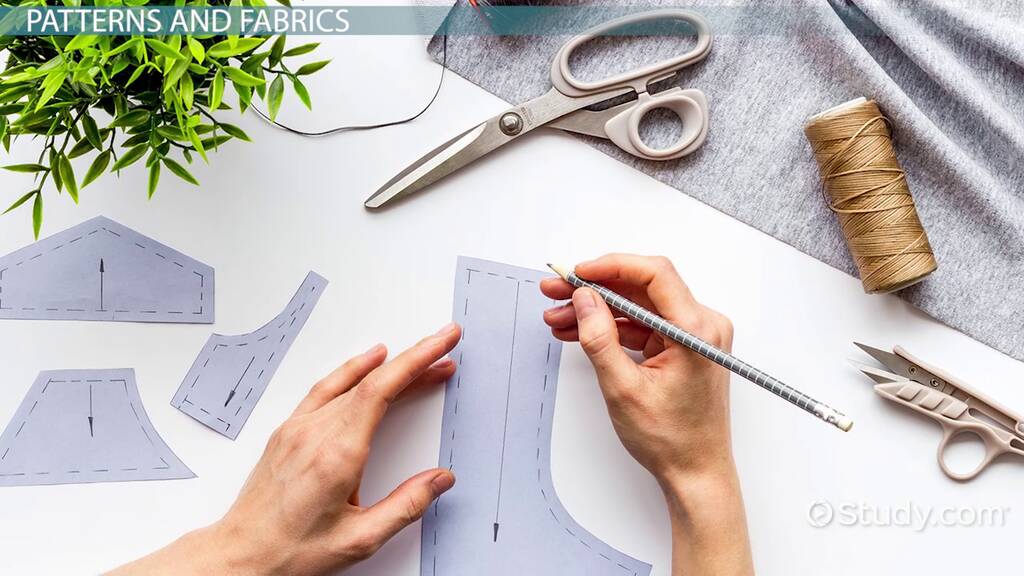Garment Construction: The Art and Science of Creating Fashion
Garment construction is a foundational element in the field of fashion design, representing the intricate process of transforming a designer's vision into wearable clothing. This discipline combines creativity, technical precision, and craftsmanship to create garments that are not only visually appealing but also functional, comfortable, and durable. Whether for high fashion, ready-to-wear, or mass-market production, garment construction is where design ideas become tangible realities.
Definition and Importance
At its core, garment construction refers to the entire process involved in assembling a piece of clothing, from the selection of fabric to the final finishing details. This includes pattern drafting, fabric cutting, sewing, fitting, and finishing techniques. Understanding garment construction is essential for any fashion designer, tailor, or apparel manufacturer because it directly affects the fit, appearance, and quality of a garment.
The construction quality of a garment not only determines its longevity but also reflects the brand's standards and craftsmanship. Well-constructed garments enhance the wearer's comfort and movement while maintaining the integrity of the design. Conversely, poor construction can ruin even the most innovative designs.
Stages of Garment Construction
-
Design and Pattern Development
Before construction begins, a garment starts with a design concept. This idea is translated into technical drawings and then into patterns—the templates used to cut fabric pieces. Pattern development may involve:
-
Flat pattern drafting using measurements
-
Draping fabric on a dress form
-
Using digital pattern software for precision
Accurate patterns are essential for proper fit and balance.
-
Fabric Selection and Preparation
The choice of fabric is critical. Fabric determines how a garment behaves, how it drapes, how it feels against the skin, and how it responds to stitching and finishing.
Once selected, fabrics are:
-
Pre-shrunk (if necessary)
-
Pressed and laid flat for accurate cutting
-
Checked for grain alignment to prevent warping
-
Cutting
Precision in cutting fabric pieces ensures a smooth construction process. This can be done manually or using computer-controlled cutting machines. Each part of the pattern is laid out with attention to grain lines, pattern direction, and seam allowances.
-
Marking and Notching
Markings are transferred from the pattern onto the fabric to indicate darts, pleats, notches, and other construction details. Notches help match fabric pieces during sewing, ensuring accuracy.
-
Sewing and Assembly
Sewing is the most labor-intensive stage. Depending on the garment's complexity, it may involve:
-
Joining major components (e.g., bodice to skirt)
-
Creating details like collars, cuffs, and pockets
-
Inserting zippers or buttons
-
Applying interfacing for structure
Sewing techniques vary widely, from machine stitching for efficiency to hand stitching for delicate detailing.
-
Fitting and Adjustments
Once the garment is assembled, it undergoes fitting. The designer or tailor assesses:
Alterations are made to refine the garment before final finishing.
-
Finishing
Finishing includes all final touches:
-
Hemming the edges
-
Pressing seams for neatness
-
Lining for comfort and durability
-
Topstitching, trimming, or embellishment for aesthetic appeal
Proper finishing elevates the overall quality and presentation of a garment.
Techniques in Garment Construction
Garment construction includes a wide variety of techniques that depend on garment type, fabric, and desired effect. These include:
-
Seam types: plain, French, flat-felled, and overlocked
-
Darts and pleats: for shaping and volume
-
Facings and linings: for a clean interior finish
-
Closures: zippers, buttons, snaps, and hooks
-
Hand sewing techniques: slipstitch, blind hem, and basting
-
Serging and overlocking: to prevent fraying and improve durability
Advanced techniques such as couture sewing, boning, padding, and bias cutting are used in high-end garment construction to achieve intricate details and structured silhouettes.
Tools and Equipment
Garment construction relies on a range of tools, from basic to advanced, including:
-
Sewing machines (industrial and domestic)
-
Dress forms and mannequins
-
Shears and rotary cutters
-
Measuring tools: tape measures, rulers, French curves
-
Marking tools: chalk, tracing wheels
-
Pressing equipment: irons, pressing hams
-
Hand sewing needles and threads
Technological advancements now include CAD software for pattern drafting and automated sewing machines, improving accuracy and production speed.
Role in Fashion Design and Industry
Garment construction is central to the fashion design process. Designers who understand how garments are built can better communicate with pattern makers, sample makers, and manufacturers. This knowledge helps them:
-
Create feasible designs that can be produced efficiently
-
Choose appropriate materials and techniques
-
Control the cost and time of production
-
Ensure quality standards are met
In the fashion industry, the ability to produce well-constructed garments impacts a brand’s reputation. High-end brands emphasize hand craftsmanship and detail, while fast fashion focuses on speed and scalability—but even then, construction quality affects customer satisfaction and return rates.
Sustainability and Innovation in Garment Construction
With growing attention on sustainable fashion, garment construction methods are evolving. Designers and brands are adopting:
-
Zero-waste pattern cutting
-
Modular garment construction (pieces that can be reconfigured)
-
Recyclable and biodegradable materials
-
Minimal-seam garments to reduce labor and fabric waste
Innovations such as 3D printing, digital prototyping, and smart textiles are also influencing the way garments are constructed, allowing for more customization, speed, and sustainable practices.
Conclusion
Garment construction is a vital aspect of fashion that combines artistic vision with technical skill. It bridges the gap between concept and creation, turning sketches into wearable, functional designs. Mastery of garment construction not only empowers designers to realize their ideas effectively but also upholds the standards of quality, fit, and craftsmanship that define great fashion.
As the fashion industry continues to evolve with technology and sustainability in mind, the principles of strong garment construction remain timeless—essential for both the classroom and the catwalk



